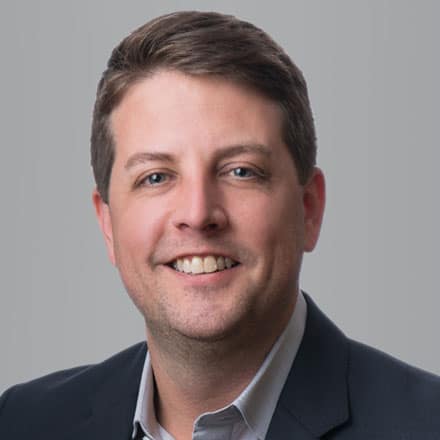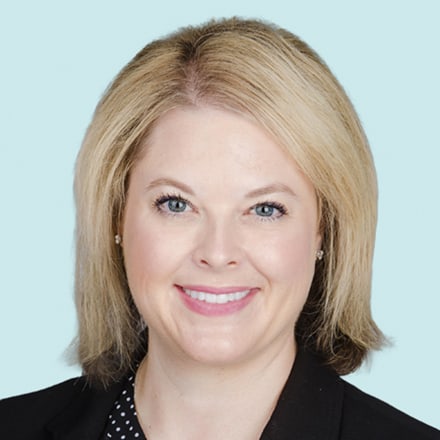Inside Angle
From 3M Health Information Systems
Three questions with Paul Whitaker: Shifting the dynamic of care and 2022 trends in revenue cycle and CDI
I sat down with the 3M Health Information Systems VP of CDI Paul Whitaker to talk about his unique background that led him to 3M HIS, how the pandemic has impacted the dynamics of care and what trends are on the horizon for 2022.
Welcome to Inside Angle Paul! You’ve been at 3M HIS for a few years, but recently took on a new role. Tell us a little bit about your background and what you’re doing in your new role.
Thanks for including me in this series! I’ve been with 3M for about 12 years and recently took on a new role to lead our 3M HIS clinical documentation integrity (CDI) strategy. I started out in health care 22 years ago putting together paper charts on the weekends in college. After graduation, I worked as a medical records coder, then a CDI consultant and eventually worked in clinical operations for a large teaching academic hospital. I found my way to 3M and started out as an account manager, then a solutions sales executive, which expanded into a health care solution executive role where I managed our health care solutions executive team as well as our sales training and demonstration content.
My background gives me a unique perspective for this role since I’ve seen both the provider and vendor sides of the fence. In my new role I’ll be developing and reinforcing our value propositions in the market and accelerating our CDI initiatives. My focus will be on true cross-pollination within other business units to ensure customer retention, create new CDI strategies and identify new opportunities for growth for our clients. We’ll not only be welcoming new clients to 3M HIS, but growing the value and ROI for our existing client base. I’m excited about the new strategic CDI vision we’re creating for all of our clients.
When I’m not working, I’m typically chauffeuring my very active 4-year-old to karate, yoga or soccer. We have a cool rescue dog named Roxy that loves to play outside and when the weather is nice, you can find me on the golf course. I live in South Carolina and currently volunteer my time with a local non-profit that works with underinsured and uninsured populations.
The last two years have presented so many unique challenges with COVID-19, which in turn has driven many changes to the way our health care system operates both financially and clinically. What are some of the changes you’ve seen in health care that are here for the long term?
One of the most prominent things has been the shift toward telehealth. When you think about what that means today, it means the difference between driving 20 minutes to the doctor’s office, putting on a mask, checking in, sitting in a waiting room with 30 other people and waiting an hour to be called back. Now, you can log into the provider’s system and meet directly with your doctor from the comfort and safety of your home. This has certainly shifted the dynamic of care and care settings as we experience variants of the COVID-19 strain as well as escalations in certain geographical areas.
I think that the other big shift is the focus on mental health. We’ve been isolated. We’re taking fewer vacations and seeing our friends and family less. Then, you incorporate parenting and home schooling on top of all that and people get worn down; depression and anxiety are on the rise. Focusing on the whole person and emphasizing mental health is a trend I hope is here for the long haul.
I think that the third shift is remote work. 3M, like most companies, (for the most part) has moved to virtual work environments and a lot of our clients have realized that they don’t need their non-clinical staff physically in the office as much as they thought. In certain cases, this had impacted budgets and the way organizations conduct business. On the flip side, we can’t forget about the human perspective. Individuals miss their co-workers, and some want the experience of being face-to-face in the office with their work colleagues. It will be interesting to see how these shifts affect long-term business practices. We will definitely need to find a balance.
What are some trends you see on the horizon for revenue cycle and clinical documentation integrity for 2022?
One of the trends the last year or so has been artificial intelligence (AI), and I can say with confidence that it is here to stay. AI is a huge umbrella term that can encompass anything from “Hey Siri” on my phone to Alexa in my home controlling the lights or my music, or voice control for my TV remote. The important thing to know is what technology is behind it.
For example, our focus with AI is to ensure we’re documenting the right care at the right time for the right individual. We’re using true AI when we talk about technology layers working in the background to document, code and audit a patient visit. Our technology stack under the AI umbrella is a layer of ambient, front-end speech recognition, machine learning, natural language understanding, clinical concepts and content, natural language processing, and our health care data dictionary that normalizes clinical information as an underpinning to this technology. So, while AI is certainly a hot topic and will remain a buzz word for years to come, the important thing to know is the technology behind the AI.
Another trend we see is creating operational efficiency with both revenue cycle and CDI. You can’t just plug in a technology solution and expect it to create full autonomy. You have to take incremental steps to create operational efficiency that results in true autonomy. This means focusing on the quality of documentation, quality within revenue cycle and identify what KPIs are important to measure: positive outcomes on quality measures, patient severity and risk, capturing chronic conditions, capturing social determinants of health, denials management, etc.
Those are the trends that leaders want to achieve. They don’t happen overnight though. It’s not enough to say that you have the technology. The focus should be on how you can ensure that you have, but not limited to, the technology, consultative support, the intelligent insight from reporting in place to create sustainable and improved outcomes over a period of time. That’s how we’ll get to a fully autonomous and sustainable model.
Paul Whitaker is the vice president of clinical documentation integrity (CDI) at 3M Health Information Systems.
Kelli Christman is senior marketing communications specialist at 3M Health Information Systems.




